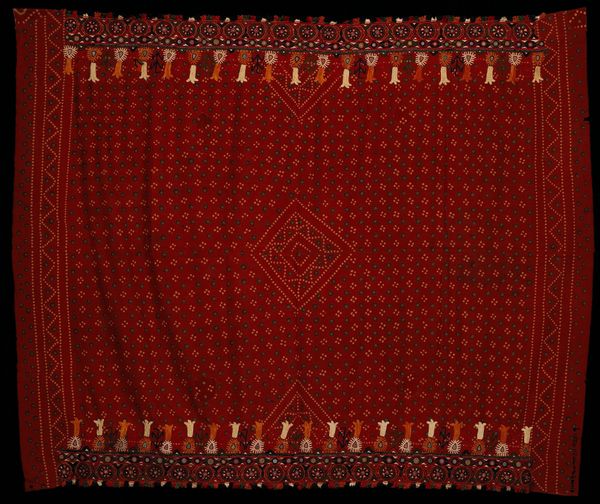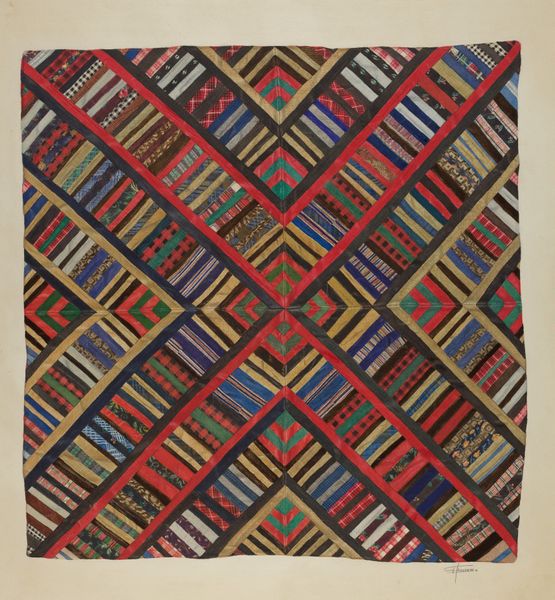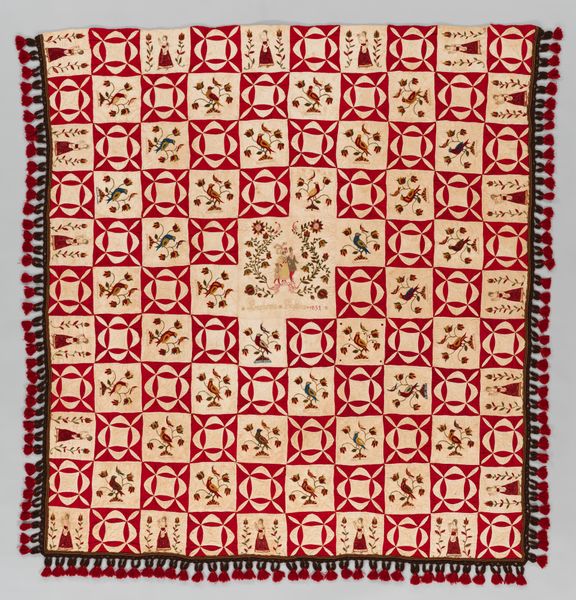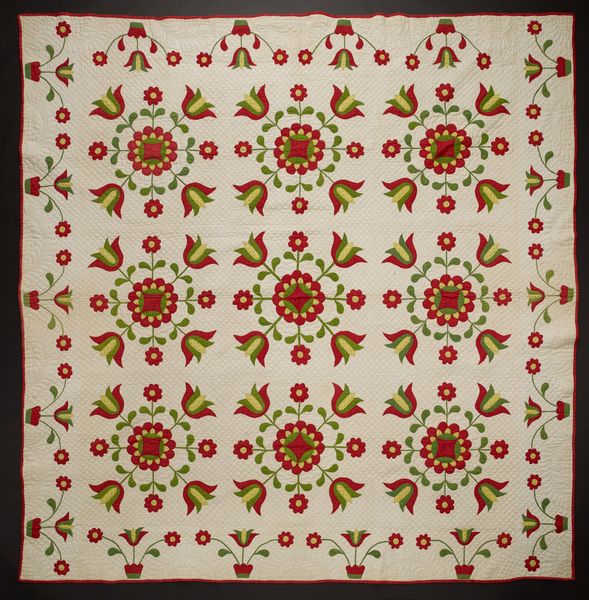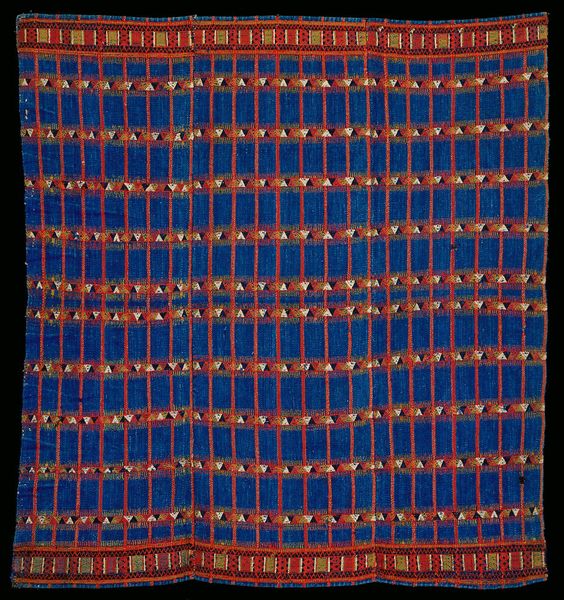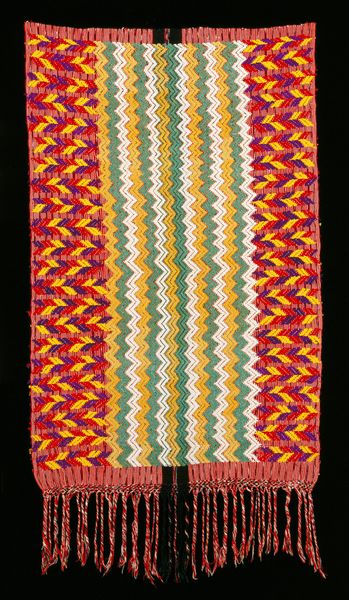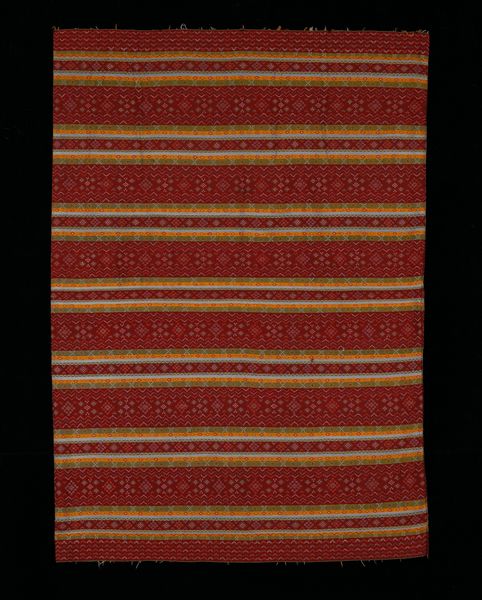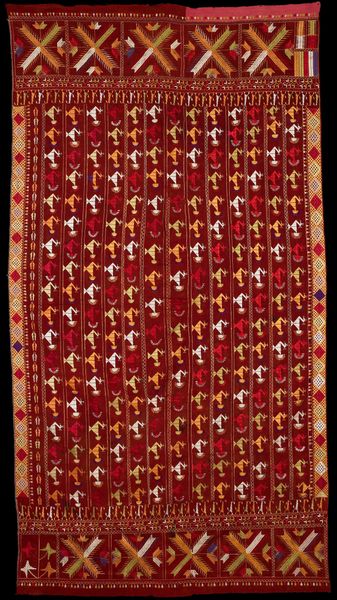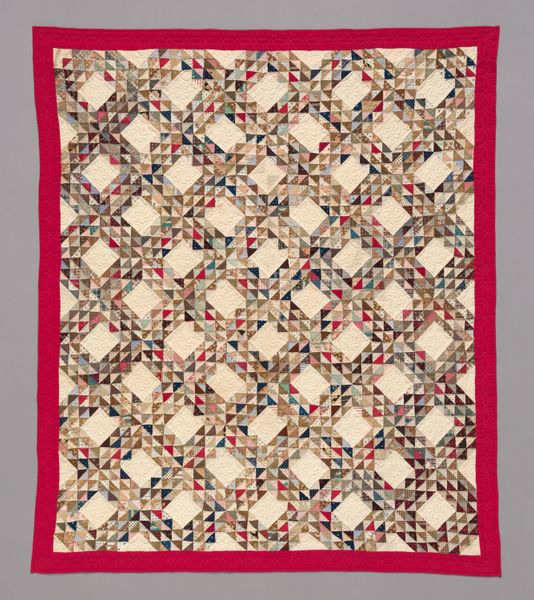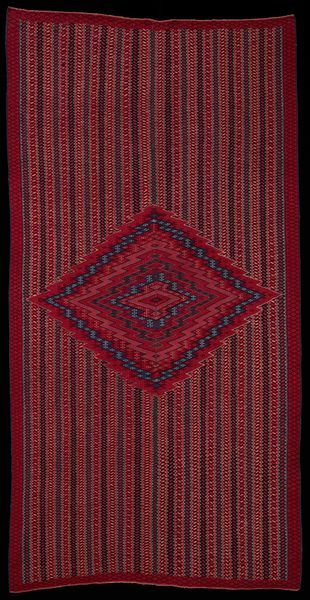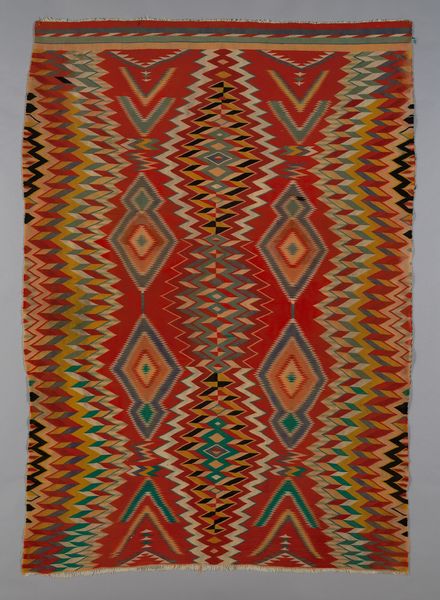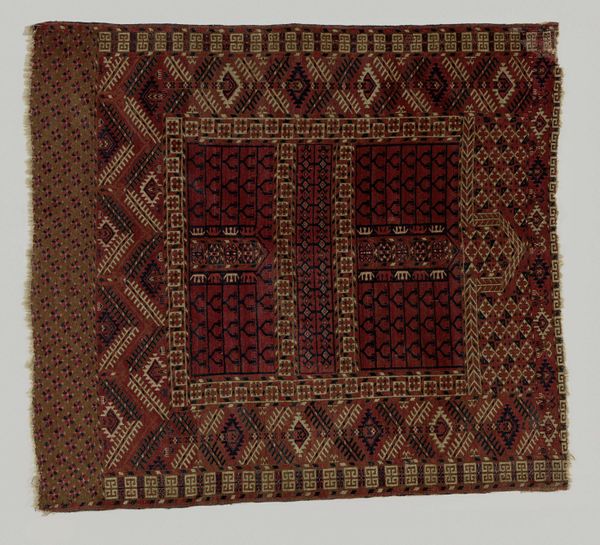
weaving, textile
#
pattern heavy
#
folk-art
#
weaving
#
textile
#
geometric pattern
#
pattern design
#
folk-art
#
geometric
#
repetition of pattern
#
vertical pattern
#
regular pattern
#
pattern repetition
#
textile design
#
layered pattern
#
combined pattern
Dimensions: 8 ft. 5 in. × 94 in. (256.5 × 238.8 cm)
Copyright: Public Domain
Editor: This beautiful woven textile, a coverlet from 1842 by Leonard Metz, is at the Metropolitan Museum of Art. The density of the repeated floral and geometric patterns is stunning, a real feast for the eyes. What can you tell me about this piece? Curator: This coverlet provides a fascinating glimpse into the socio-economic landscape of 19th-century America. What do you notice about its construction, particularly where it says, "Made by?" Editor: Well, it says, "Made by Metz, Ontigo Mery. Co.," so it seems pretty explicitly marked as a product. Curator: Exactly. We see the rise of manufactories being proudly advertised. This piece is a textile but it also shows us a key transition. Before, these intricate weavings were made within the domestic sphere. Now, the "Mery Co." suggests factory production. How does knowing it was factory-produced impact your view of the intricate designs? Editor: I suppose it takes away some of the "folk art" charm. It feels less personal, perhaps more commercial. Does the pattern itself offer insights into its intended market? Curator: Certainly. The geometric patterns, the symmetrical floral arrangements, and even the bold colors were all calculated to appeal to a rising middle class seeking to display their prosperity and taste. These objects offered a visual language for expressing newly acquired status. We need to think of how folk art and factory objects mixed. Editor: So, it’s not just a pretty coverlet, but a statement about societal shifts. Thinking about the audience and manufacturing really changes how I see it. Curator: Precisely! It’s a powerful reminder that art is deeply embedded in social and economic currents.
Comments
No comments
Be the first to comment and join the conversation on the ultimate creative platform.
